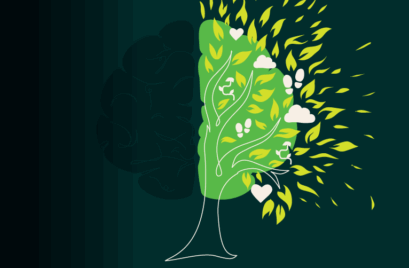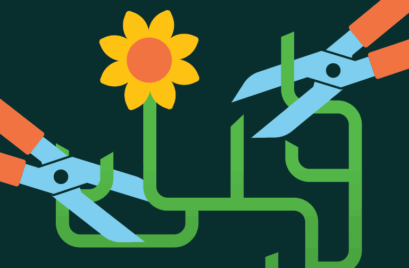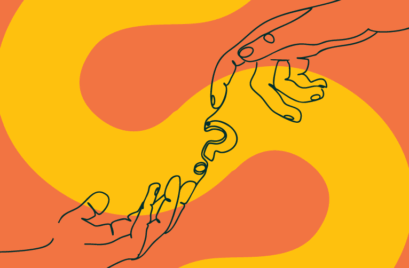
What do an expert in wound healing, a leading veterinary surgeon, and a specialist in theatrical makeup have in common? Together they were able to produce a breakthrough product intended to prevent infections associated with surgery for the company 3M. This is not an isolated occurrence. Companies are coming alive to the power of bringing together these types of disparate thinkers, to achieve incredible results.
And it’s certainly a timely development.
Our teams need to be able to do more than ever. The expanding array of core capabilities (think: influencing, analysing data, prioritisation, strong written drafting, storytelling, adapting to change) means that having a diverse range of thinking styles is critical. Here we are talking not specifically about diversity of characteristics (although that is related), but a concept called cognitive diversity.
Thinking… Differently
Fundamentally, do people think differently? Well, the short answer is yes. We know that each of us thinks differently due to a range of physical, cultural, and historical factors, which have shaped the way we see the world. However, if we then apply that thinking to a productive task, the question becomes: do these differences in thinking manifest in different types of intelligence?
In Howard Gardner’s 1983 classic text Frames of Mind: The Theory of Multiple Intelligences, he identified eight types (later adding a ninth) of intelligence. These were:
- Musical
- Visual-spatial
- Linguistic
- Logical-mathematical
- Bodily-kinesthetic
- Interpersonal
- Intrapersonal
- Naturalistic (later added)
Since its publication, there has been a lot of debate over the idea of multiple intelligences. While there is strong reliable evidence for a general intelligence factor (‘g’) – as measured in IQ tests – we have limited empirical evidence measuring other types of intelligence.
However, we also all know people who are good at specific areas of life: like music, words, or sport. Is this another form of intelligence? Or is it the application of general intelligence to a specific area? What other ‘intelligence’ factors might be going on here? We are yet to be able to clearly separate and measure the broad range of human intellectual capabilities.
Celebrating Diverse Thinking
Having said that, there seems to be value in continuing to explore this area. Many argue that it is reductive to limit our thinking about intelligence to just a single factor measuring predominantly reasoning and problem-solving skills. Moreover, it’s clear that certain people excel in certain types of thinking. The concept of emotional intelligence (EI), for example, has been a useful tool in organisational studies and has accrued a reasonable amount of evidential support (with meta-analysis demonstrating the importance of EI to a range of positive career-related outcomes). Similarly, somatic intelligence – as a measure of the degree to which we understand the signs, presentations, and experiences of our body – is receiving increased attention with the ‘return to the body’.
We all know people who are particularly creative or organised or relational. However, our natural tendency can be to seek out and collaborate with those who are similar to us though. Leaning into diversity can have immense potential. Cognitively diverse teams solve problems faster and have greater collective intelligence (up to a certain point of diversity).
Issues often arise when we fail to recognise the value of different ways of thinking. We might employ tunnel vision on thinking styles and only value that which provides task efficiency in a very narrow field. A team that has that efficiency, but also people who are strong influencers, collaborators, innovators, and visionaries, will always be more effective.
There’s a real opportunity to observe ourselves and notice how we might feel threatened by different ways of thinking or instinctively try to shut it down. Rather than reacting straight away when someone moves into ideation or introduces an idea you see as a bit out there, take a moment to entertain the thought: what’s the worst that could happen here? Is there a better way we could be doing this?
Leaning into our Intellectual Potential
So, what does this all mean for the teams we work in? Here are some suggestions:
1. Hire for diverse thinkers
The more variety in the intelligence of your team, the less you need to search this out externally. We know that diversity of thought is a powerful predictor of innovation — provided people are put into the right team environment. The first step as a leader is getting the right people in the door (and at the table!). Think about your current team and where the opportunities are for bringing in different strands of thought and “intelligences”. As part of your succession planning, it can be useful to map out what skills, abilities and characteristics your team composition currently addresses (or doesn’t) — and then when someone moves on, you’ll be ready to bring the right person in.
2. Welcome diversity
It’s not uncommon for organisations to pay lip service to the idea of cognitive diversity but then once diverse thinkers come into the organisation, they find themselves being stonewalled or blocked. That’s why it is critical to be really overt around inclusive practices — having a workplace where people are saying, appreciating and actually believing that diversity of thought is important. Bring this message to the forefront and introduce rituals and practices to support it. For example, encourage team members to go and find someone who they know, or suspect, will disagree with their idea to provide a conflicting perspective. This will help them test their proposition and is a highly effective way of avoiding the perils of groupthink.
3. Celebrate your strengths
Bring the team together to explore each other’s strengths and capabilities. This can be done through using assessment tools — such as the CliftonStrengths finder — or simply just a facilitated discussion where people identify and share their strengths. Not only does this highlight for each other where our multiple intelligences lie but it builds a sense of trust and cohesion.
4. Articulate your needs
Of course, with different thinking, comes… well different thinking. And that can inevitably lead to conflict. While having some degree of creative tension is important, we need to be able to articulate what our boundaries and needs are in the workplace. Get people used to talking about this openly and clearly. One helpful way to do this is by drawing up a social contract. For example, your team might make a clear distinction between task and person conflict: i.e. that the team commits to rigorously engaging in debate on tasks or ideas but refuses to engage in personal conflict during the conversation.
The reality is that it’s very rare to have a single team member who can do ‘everything’, given the expanding array of generalist skills needed in organisations today. Leaning into a diverse and multiple ways of thinking will mean your team can deliver across the board.







